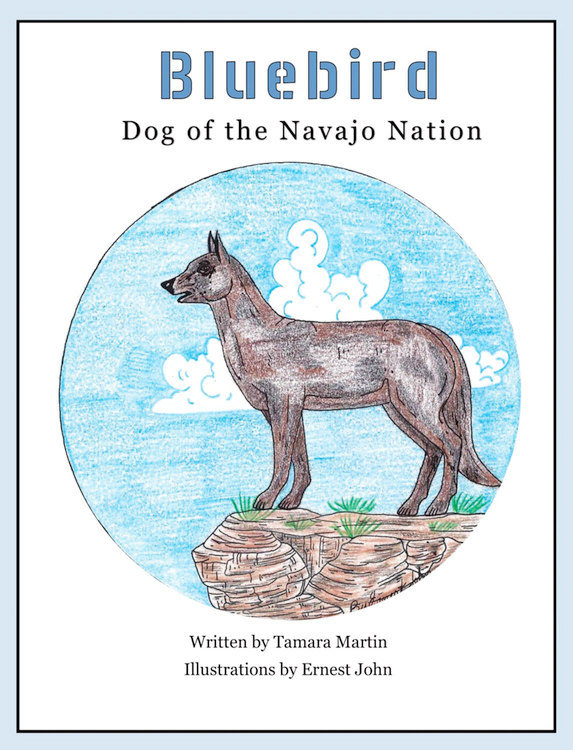By Jacqueline Vaughn
Bluebird, the first children’s book written by St. Johns, Arizona resident and Blackhat Humane Society founder Tamara Martin, exemplifies the axiom, “Write about what you love.” The title character is an indigenous Native American dog, known colloquially as a Rez Dog.
This is a subject well known to the author and based on experiences that began 1999 when she and her husband moved to work in Ganado on the Navajo Nation. The extreme poverty of the region, the strays and bodies of animals hit by vehicles or killed by other animals, led Martin and her friends to start the rescue group to help find homes for abandoned and injured or sick animals.

What makes this book unique and perhaps especially appealing to both children and adults are the color illustrations by Navajo artist Ernest John, a muralist and potter who is based in Yah-ta-hey, New Mexico, who also trains horses.
Martin and John worked together on this project to feature her storytelling skills to write about a dog that is born to a sheep herding family and then left to fend for herself by her owner, raising her two puppies behind a store in town.
Martin provided the illustrator with a single sentence to guide him in his drawing, and the sometimes childlike colored pencil images that result are no doubt evocative of John’s own life experiences growing up.
The storyline includes a prayer to Bluebird’s ancestor Grandfather Coyote, asking why there are so many hungry dogs that stand starving by busy highways instead of guarding their family’s sheep and houses. “We stayed awake at night, watching, so the humans could sleep in peace. We were valued.” Now, Bluebird is sad and feels useless, waiting for a kind family that will see her and her puppies and take them to safety.
Martin’s book builds on her own menagerie of five dogs, seven cats, a horse, a llama, and a donkey, but she notes that she really wanted to write a book for Navajo children that they would identify with and one where the ending was neither happy nor sad.
At every level, it’s a story that realistically portrays the life of thousands of rez dogs who often die within a year or two of being born. Take a drive through the Navajo Nation and you will see small packs of them begging for handouts at gas stations or fast-food restaurants, or boxes of puppies left behind on a rural road, or rounded up and killed by Navajo Nation Animal Control.
Martin is now the founder of a foster-based organization, Good Dog Rez-Q, which has no physical facility but instead recruits volunteers who care for animals in their own homes until a suitable adopter can be found.
Bluebird is clearly a labor of love. As the author notes on the dedication page, “This book was lovingly drawn and written to show readers that abandoned and stray dogs like Bluebird have feelings, families, a history and pride.”
The illustration on the last page of the book shows Bluebird waiting under a tree for that kind family to adopt her. Martin says she has a dream that one day there will be a Navajo Nation Humane Society with veterinarians and hundreds of caring volunteers to find solutions for animals who are no longer valued. Like Bluebird, she is waiting.

